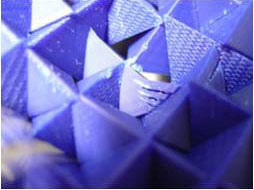Even though it’s nicer to think positively about what most people immediately associate with 3D printing, the reality sometimes deviates from the ideology. And while there are many good, positive applications that already contribute to improving people’s lives worldwide — such as dental and medical implants — and research into future applications such as 3DP-infused sustainable meat; many will probably also think of a new world of terroristic and other security threats via 3D printed guns and unmanned aerial vehicles carrying bombs courtesy of the prolific press coverage. Of course there are also the innocuous applications – like customizable iPhone covers – that have likely now penetrated the consciousness of the average man on the street.
Pointing fingers for this issue is also tricky – on one side applications that could actually really benefit and add value to many lives are not yet as widely available as potential suggests. On the other hand, the media does love controversy and headlines that bring those ever more important clicks to their services, driving editors to sometimes over blow issues to unbelievable extents — and that’s just a tiny fraction of the overall bigger picture. Despite all this, weaponry is an issue where 3D printing is already being widely applied to bring benefits and improve the workings of law enforcement – and of course the military.
Besides building and improving drones and gun parts, 3D printing also enables a whole new world of possibilities regarding military-oriented applications of a different kind. Earlier this year we reported on the Expeditionary Lab Mobile concept here on 3DPI, where the army had transformed a regular shipping container into a mobile lab with CNC machines, 3D printers and other FabLab-esque equipment. In today’s story, the logistics are at the core with the Army’s Research Laboratory having partnered up with Purdue University in order to create the means to build bullet-proof vehicles and aircrafts, which would enable quickly repairing them when broken down – on the spot – with 3D printed spare parts.


Perhaps this immediate and on-the-spot angle could also be brought closer to non-military personnel’s lives as well. After a couple of incidents with the car waiting for some trivial yet original spare part from the factory at the shop, a DIY solution that could create the exact part within hours wouldn’t doesn’t too bad.
Source: US Army Research Laboratory
Images courtesy of the US army research laboratory



